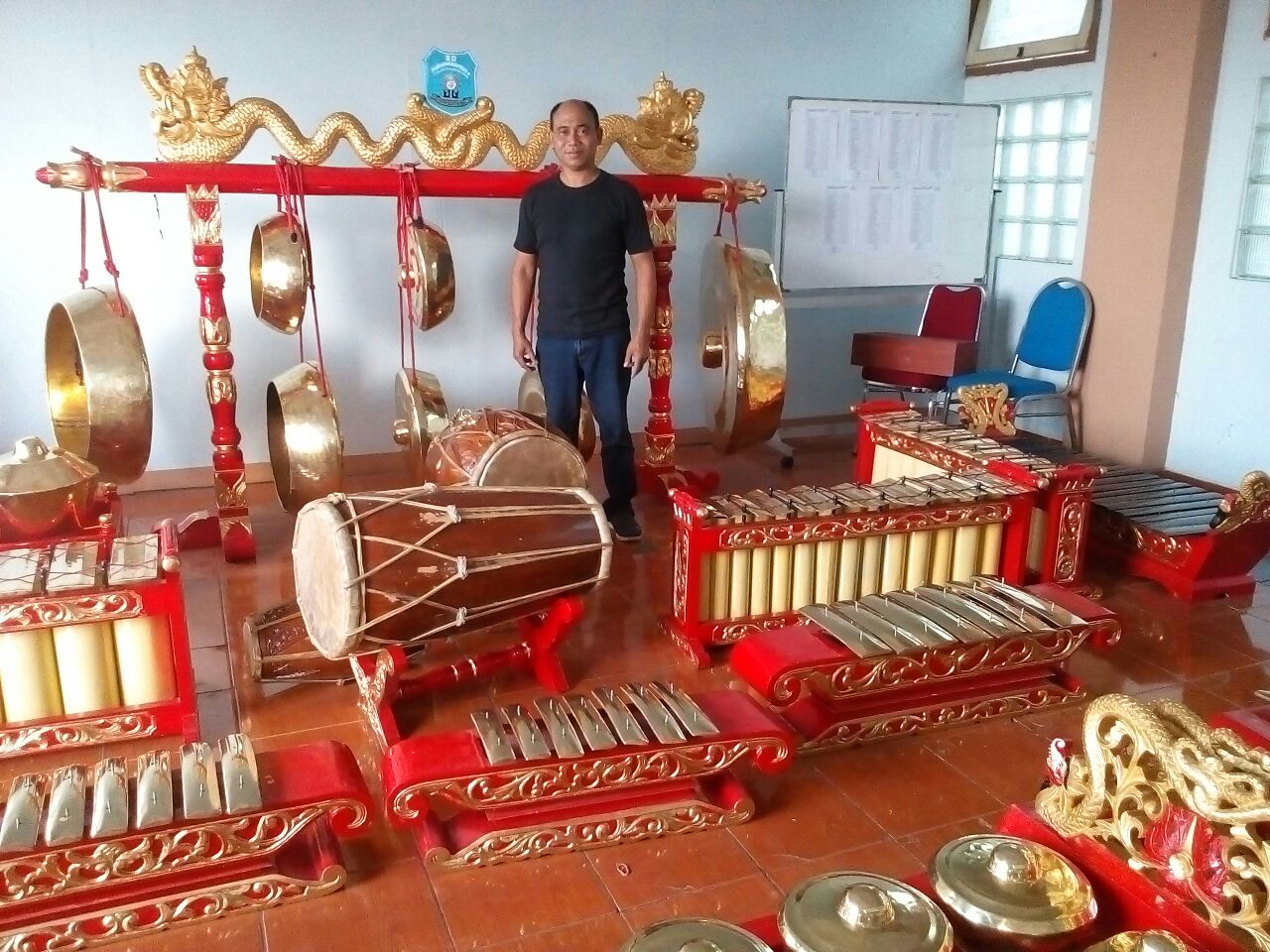KEMPUL
PENGRAJIN GAMELAN
"MADU LARAS"
NO SIUP: 511.3/2933/411.306/2013
Menerima Pesanan dan Perbaikan Gamelan Jawa
Laras Pelok , Slendro dan Diantonis beserta ancak / tempat dengan ukir biasa / timbul
Per biji ataupun Per Set
HUBUNGI:
Bpk Karyadi / Bpk Pardjono
No. HP : 085655749199
082234310871
0358-325585
https://www.youtube.com/watch?v=88KVwNMyaho&spfreload=5
https://www.youtube.com/watch?v=3rAfjFbtrgQ
https://www.youtube.com/watch?v=3K9y3ni-Zpc&t=16s
https://www.youtube.com/watch?v=mVt92DhxHlI
Kempul merupakan salah satu perangkat gamelan yang ditabuh, biasanya digantung
menjadi satu perangkat dengan Gong.[1] Kempul
termasuk bagian dari kelompok instrumen keras dari gamelan.[2] Gamelan adalah alat musik
tradisional Jawa yang terbuat dari timah dan tembaga.[2] Gamelan memiliki 2 jenis
instrumen yaitu instrumen keras dan instrumen lunak.[2] Alat musik yang termasuk instrumen
keras selain kempul adalah bonang barung, bonang penerus, kenong, kethuk, kempyang, gong, demung, saron, dan saron peking.[2] Sedangkan instrumen lunak
terdiri dari gender barung, gender penerus, rebab, gambang, siter, slenthem, seruling, dan kendhang.[2] Kempul memiliki bentuk mirip
dengan gong tetapi lebih kecil.[3] Kempul menandai aksen-aksen
penting dalam kalimat lagu/gendhing.[4] Dalam hubungannya dengan lagu/gendhing,
kempul bisa memainkan nada yang sama dengan nada balungan; kadang-kadang kempul
mendahului nada balungan berikutnya.[4] Kempul menghasilkan suara yang
lebih tinggi daripada Gong, sedangkan yang lebih kecil akan menghasilkan suara
yang lebih tinggi lagi.[1]
Sumber:
KEMPUL
Two gong rails; the two sets (on unconnected stands) are pélog and sléndro. On each there
are five kempul hung at two levels between the Gong ageng (on right) and gong suwukan (on left, facing opposite way).
A component of the Javanese gamelan, the kempul
is a set of pitched,[1] hanging, knobbed gongs, often
made of bronze, wood, and cords.[2] Ranging from
seven to ten inches in diameter, the kempul gong has a flat surface with a
protruding knob at the center and is played by hitting the knob with the
"soft end of a mallet."[3][4] "The
wooden mallet used has a ball shape head with
heavy padding on a short wooden handle.[5] The number of
kempul gongs present in a gamelan ensemble
varies but, "although there can be two to ten kempul on one separate rack,
it is common to have five kempul hanging on the same rack as the Gong ageng and gong siyem" (two larger gongs).[6]
Kempul in music
"Generally, the instruments in a gamelan orchestra may
fall into the following three functional categories:
- Instruments that delineate the structure of the piece;
- Instruments that guide temporal flow of the music;
- Instruments that carry melodies in both simple and elaborate forms"[7]
"Instruments in the first category include large and medium hanging
gongs (Gong ageng and gong suwukan), small hanging gongs (kempul),
large standing gongs (kenong), and a pair
of small standing gongs (kethuk-kempyang)."[8] "The role
of the kempul is to divide the nongans, which are the contents of each part
between strikes of a kenong."[9]
"In the middle of the gamelan, the
'skeletal' melody called the balungan is played on bronze metallophones. The
balungan is puntuated by the larger gongs (gong and kempul) and
horizontally-mounted gongs (kenong, kethuk, and
kempyang) at the back of the gamelan."[10] "The kempul, a middle voice
gong, punctuates half way to the mid-points of the metric cycle, which is
played by the kenong[11] (the kettle
gongs)." In all the central Javanese traditions, the pieces known as
Ayak-ayakan, Srepegan, and Sampak are united by a single relationship between
kempul and kenong: one kempul beat
coinciding with every second kenong beat."[12]
Tuning
"There are two racks of gongs in a gamelan orchestra
because of the two gamelan scales or
laras."[1] "These two tuning systems[13] are called slendro and pelog, thus the full
gamelan is actually a double set.
Usually the slendro set faces the
front and the pelog set the
side."[14] The two sets
are never played simultaneously. "The slendro tuning
consists of five notes per octave and the five intervals consist of small and
medium steps. The pelog has seven
pitches per octave"[15]
"In the older ensembles of east Java, one usually
finds only one kempul, tuned to a pitch 6 or pitch 5, and one Gong ageng, with no siyem or gong suwukan.
Following the augmentation of ensembles in central Java over the last
century, however, the east Javanese have added one or two siyem and three or
four kempul for each tuning system in many ensembles."[16]
Source:
http://gamelanmadularas.blogspot.co.id/2017/07/gamelan-madu-laras-nganjuk.html
http://kediriinternationalschools.blogspot.co.id/
http://kediriinternationalschools.blogspot.co.id/








Wonderful...how long will it take to order one kenong for instance.?
BalasHapusTINIAN FUTURIA GOLD FORTUNE AND ANTONY GOLD
BalasHapusTINIAN FUTURIA GOLD FORTUNE AND ANTONY titanium color GOLD. Designed by ecm titanium NUSFASIL STALEY. Price $8.99 / ion titanium hair color case titanium tent stove $15.49/ case $15.99/ case $17.99/ case $18.99/ edc titanium case $18.99/ case $18.99/ case $19.99/ case $18.99/ case $19.99/ case $20.49/ case $21.